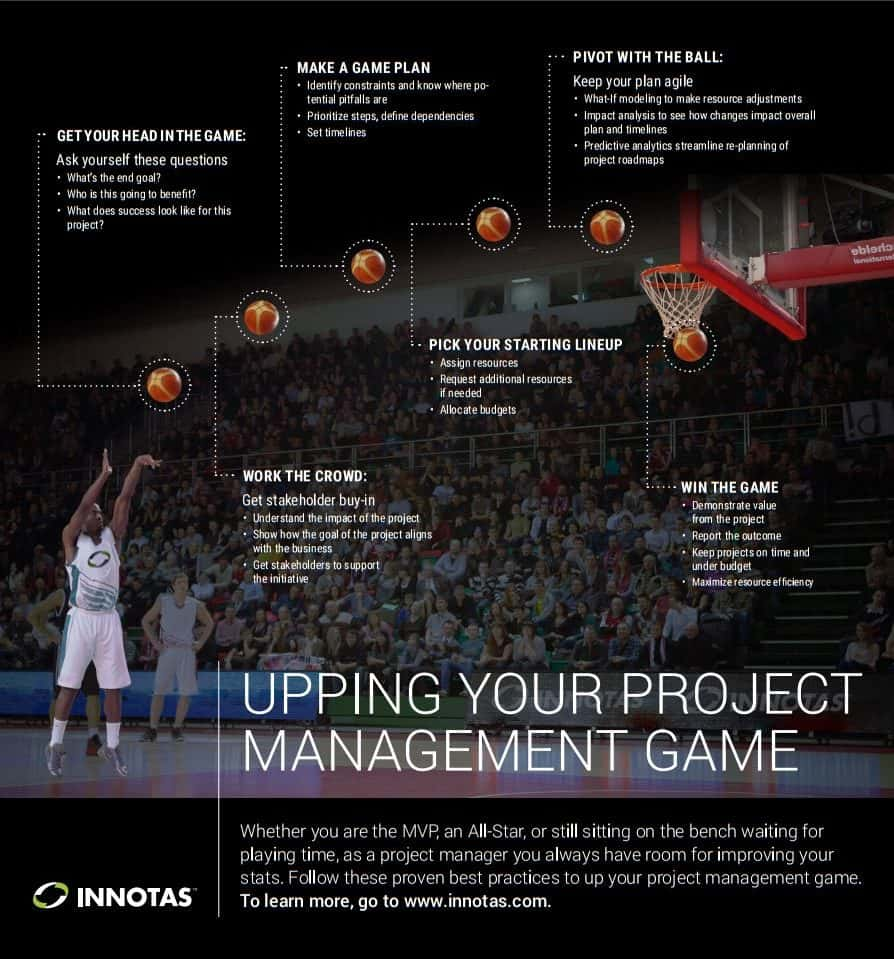
Project management is an increasingly important role in business success as project become bigger and organizations rely on successful completion of projects more and more. Project managers need to continue to increase their value add and demonstrate benefit from their efforts. Up your project management game by following these best practices:
1. Get Your Head in the Game
Ask yourself questions that challenge your project thinking and goals. What is the end goal of the project? Who is going to benefit from this initiative? What does success look like for this project? From there, you can better understand how your project benefits the organization and what stakeholders stand to gain from it. That insight allows you to make better decisions when it comes to tactical adjustments during project execution.
2. Work the Crowd
In order for a project to be successful, it starts from the beginning. Get stakeholder buy-in and support for the project. Understand the impact of the project and how it aligns to organizational goals. This ultimately helps project managers receive support for the project when more resources or time is needed. If you understand the value and who is invested, it is easier to receive support for the project along the way.
3. Make a Game Plan
Planning is key to any project and minimizing uncertainty while identifying areas of risk ahead of time helps you better plan and account for changes throughout the project. Making a game plan includes identifying constraints, setting timelines, prioritizing steps and defining dependencies. If you understand the order of tasks and what will be affected if certain tasks fall short, you will be better prepared to adjust where needed to keep the project on track. Any bottlenecks or pitfalls you can identify early will help you when plans need to change.
4. Pick Your Starting Lineup
Allocating resources can be a very challenging phase of a project. By prioritizing tasks, understanding resource strengths and budgetary needs, you can make good decisions about where resources need to be allocated and request additional resources if needed. This is also where your stakeholder buy-in can help if additional headcount is needed in a particular area.
5. Pivot with the Ball
Inevitably, even the best planned projects will experience a degree of deviation from the original plan. Keep your plan agile to incorporate necessary changes and bounce back form any falls with what-if modeling, impact analysis and predictive analytics. All of these additions create visualizations for what will happen if certain changes are made. This enables project managers to understand the impact of changes before they are implemented. Utilizing tools that provide more information give you a better chance at making the best decision with the information available.
6. Win the Game
And the crowd goes wild! When projects cross the finish line there is no better feeling. But completion needs follow up too. Report the outcome, demonstrate the value, and garner feedback to incorporate for the next round.
To get the visual representation of this data download the infographic below.





